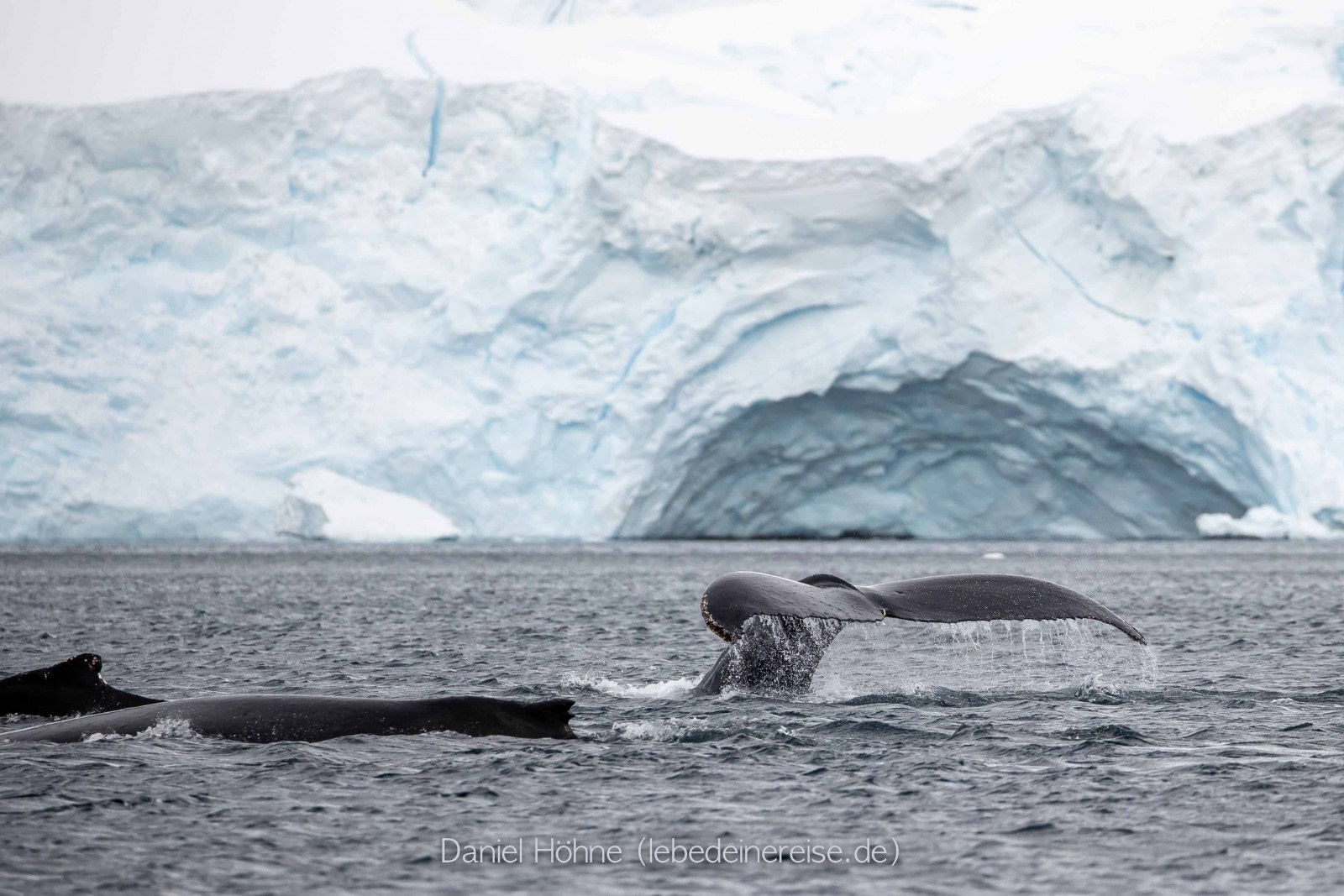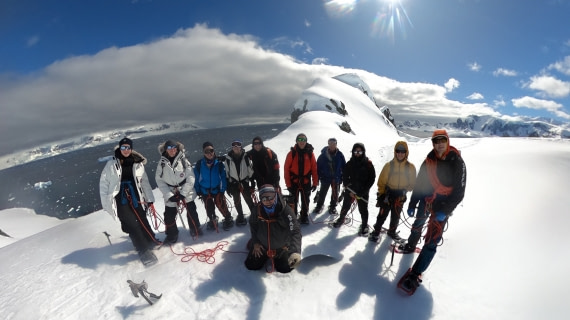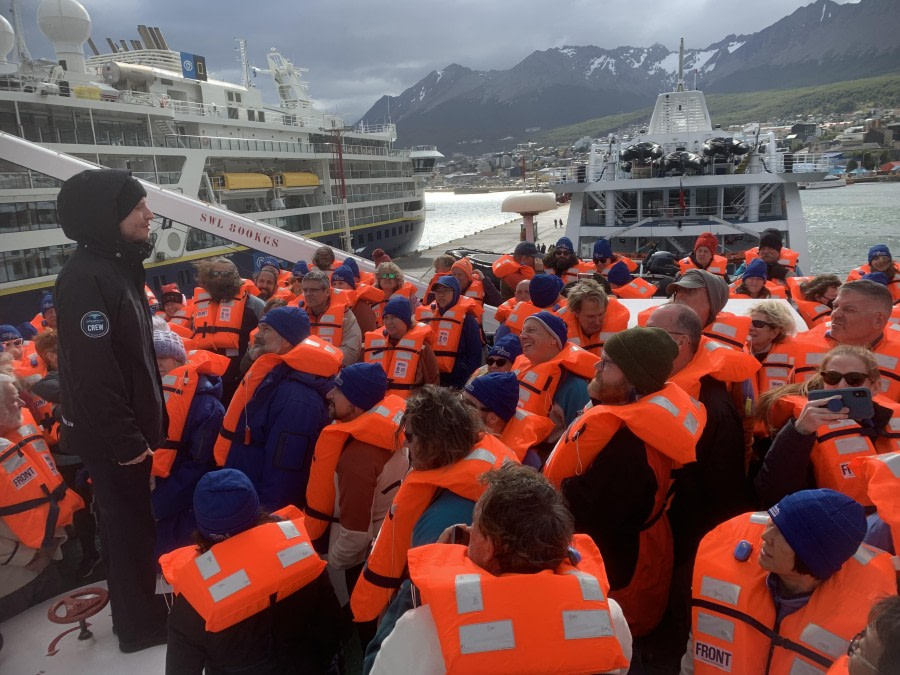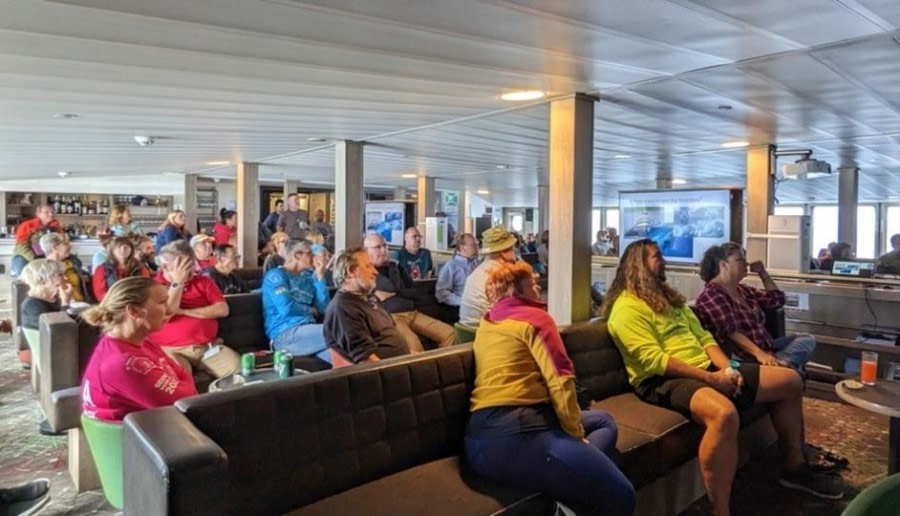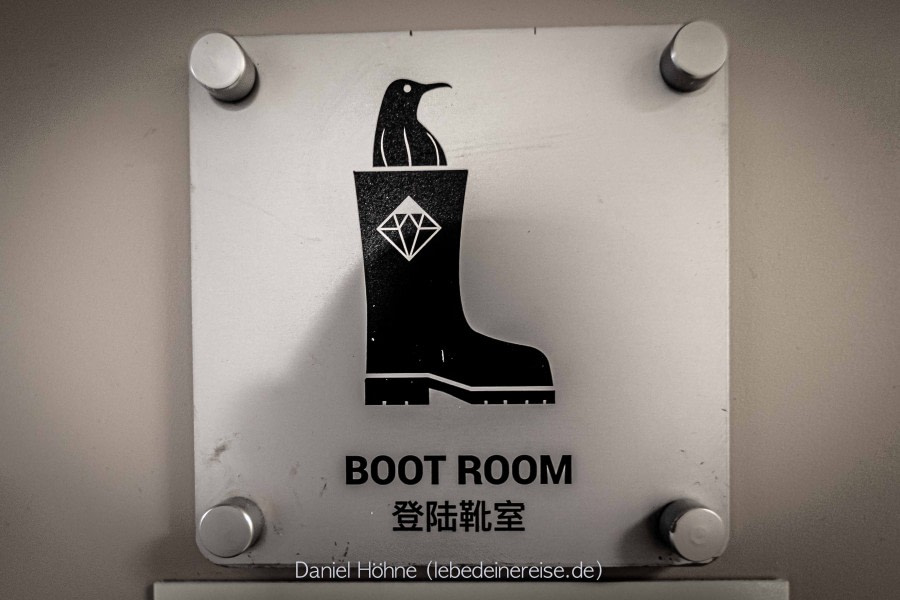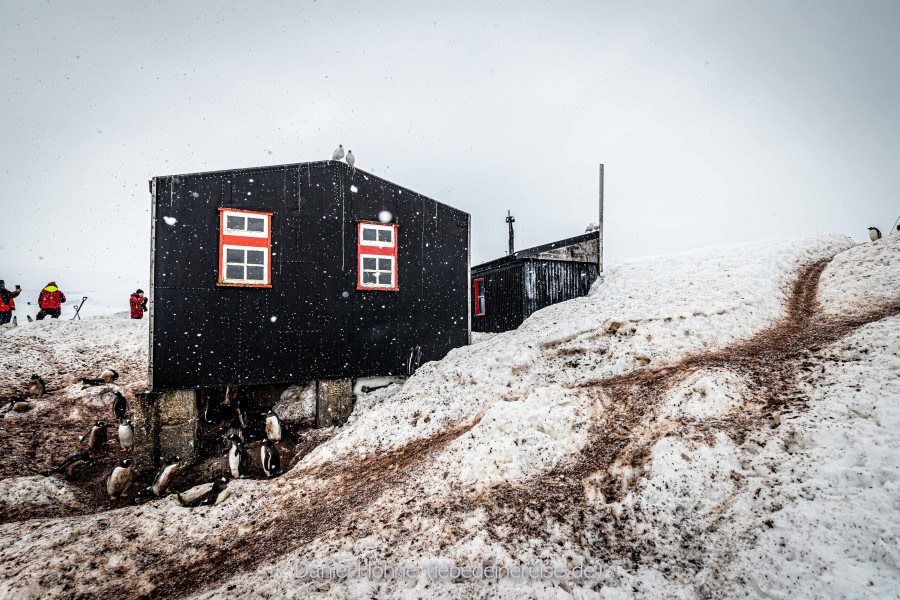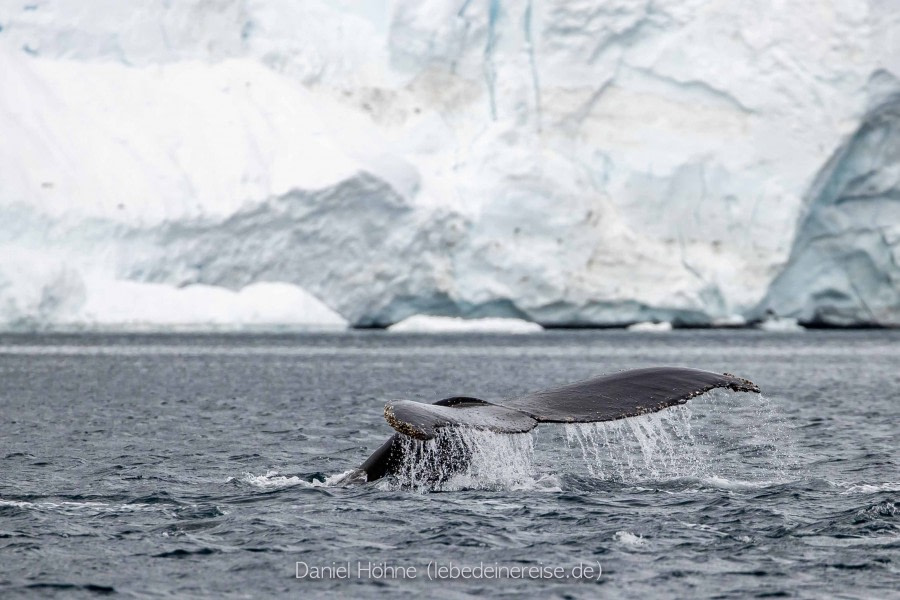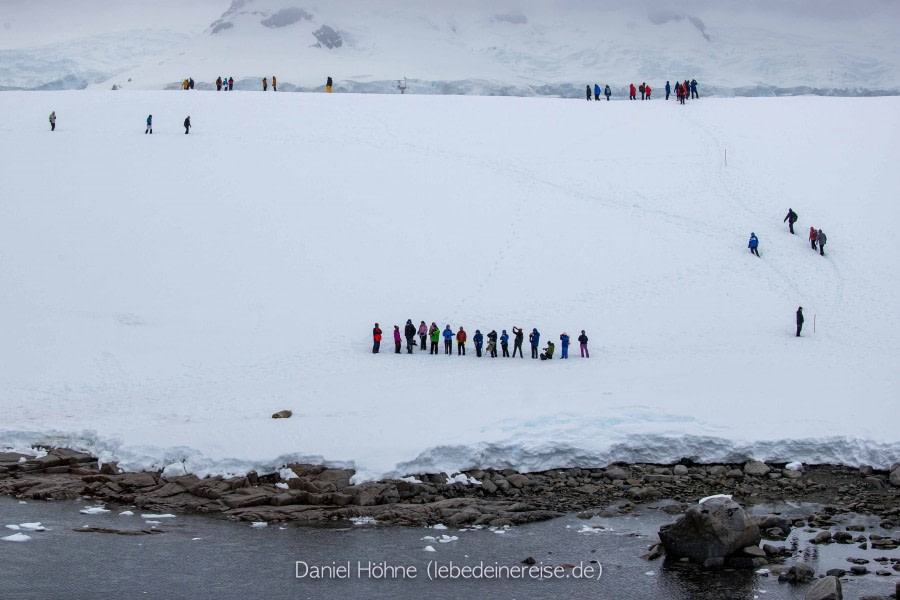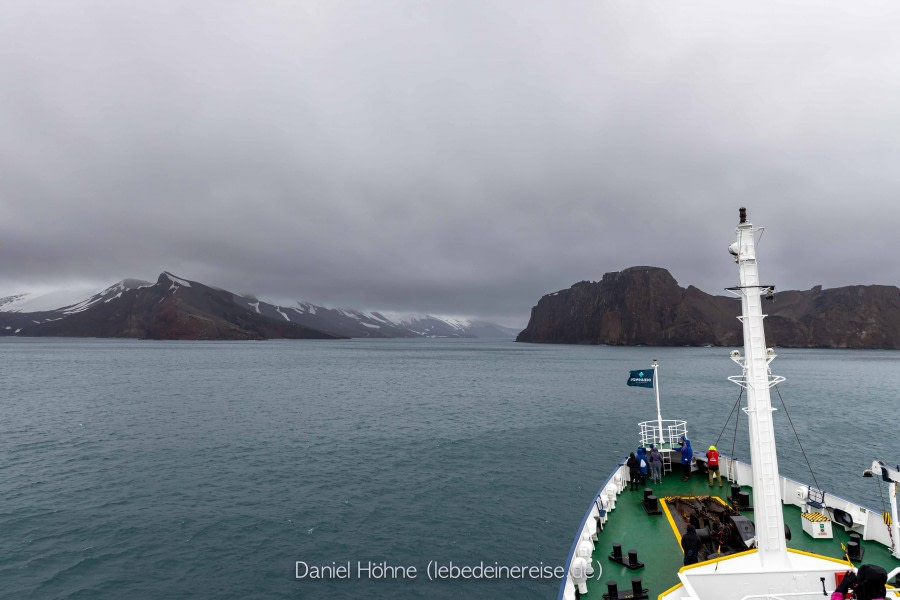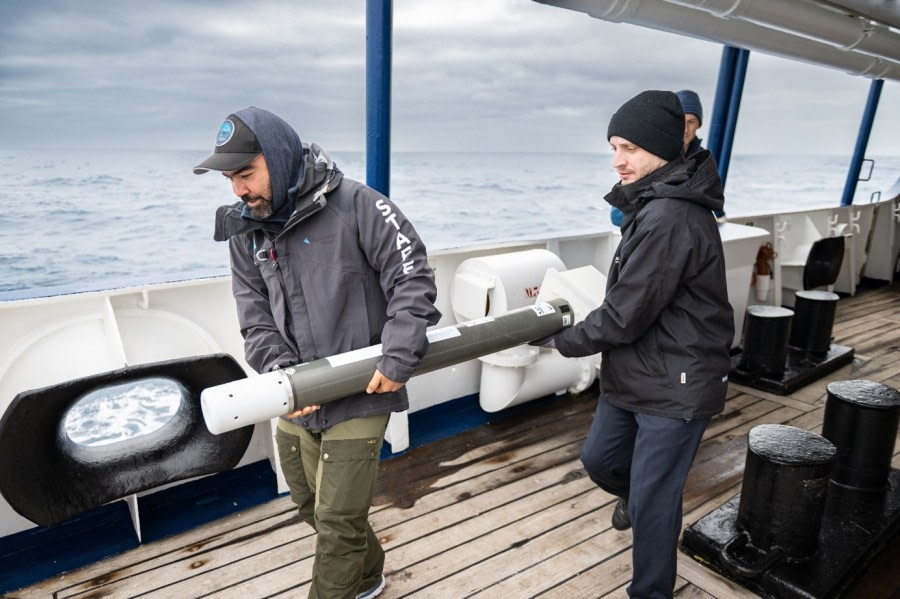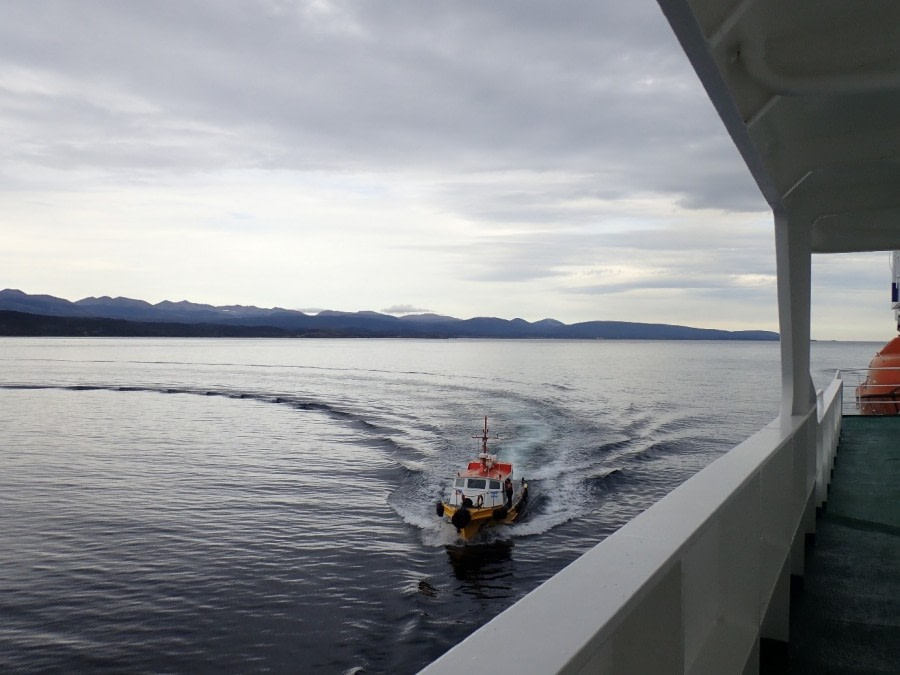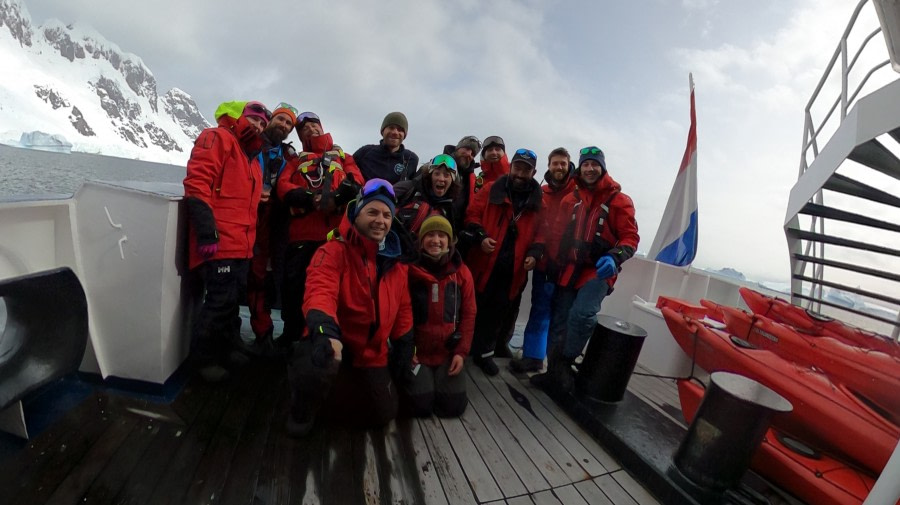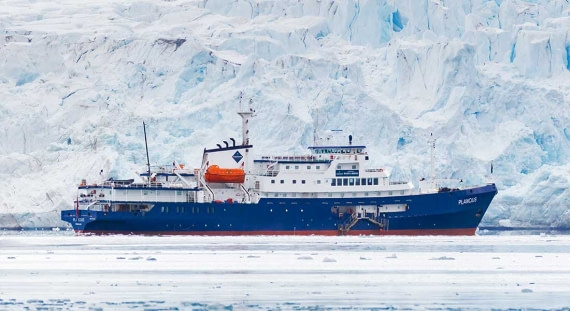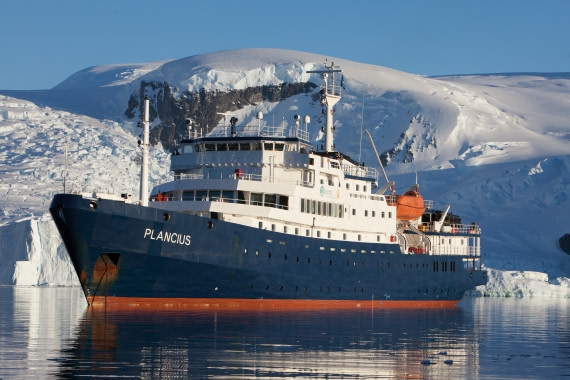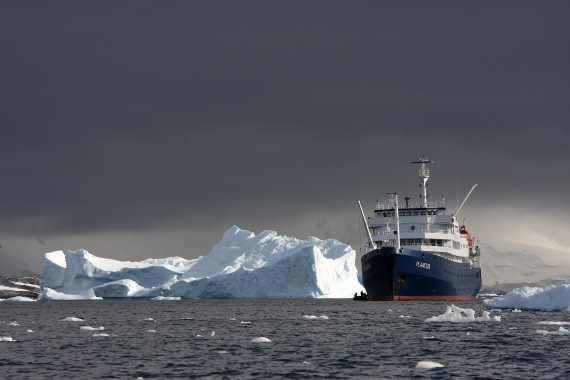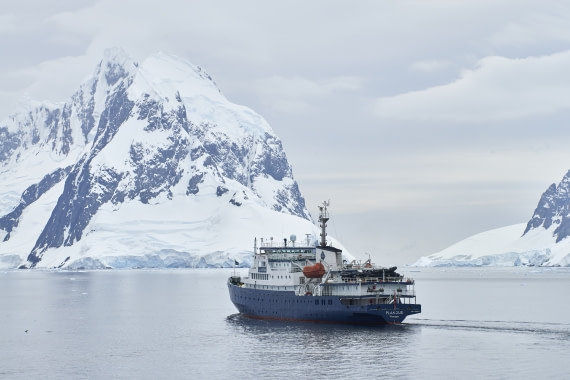| Fecha: |
13.12.2022 |
| Posición: |
64°39.9'S / 062°39.1'O |
| Viento: |
NE3 |
| Clima: |
Nublado |
| Temperatura del Aire: |
+1 |
La emoción comenzó en cuanto miramos por los ojos de buey. Podíamos ver grandes icebergs de un blanco inmaculado brillando a la luz de la mañana. De vez en cuando pasaban pingüinos papúa, saltando fuera del agua mientras corrían en sus grupitos.
A las 7 de la mañana nos despertó por megafonía Eduardo, nuestro jefe de expedición, y nos pusimos en marcha llenos de entusiasmo para nuestro primer día completo de desembarcos en la Antártida Disfrutamos de un desayuno encantador con fruta fresca, desayuno cocinado, bollería y pan fresco, todo preparado por nuestro equipo de cocina.
Durante el primer día de desembarcos, muchos de nosotros aún no sabíamos dónde estaba la zona de embarque de las zodiacs y nos estábamos familiarizando con la disposición del Plancius. Los montañeros fueron los primeros en salir, hacia las 8 de la mañana, una vez que se habían "vestido" para viajar seguros mientras estaban en tierra. Esta excursión fue a George's Point, en la isla de Rongé, justo al lado de la excursión principal a la isla de Orne.
La isla de Orne se encuentra a la entrada del canal de Errera, que separa la isla de Rongé de la península de Arctowski, en el continente. Las vistas desde esta isla son magníficas, con altas montañas alrededor densamente cargadas de nieve y hielo. El sonido de los pingüinos era nuevo para muchos de nosotros. Desde las zodiacs, muchos notaron también el crujido del hielo. Esto ocurre cuando las burbujas de aire estallan y escapan del hielo al derretirse. Desde el lugar de aterrizaje tuvimos que trepar un poco por una plataforma rocosa antes de llegar a la nieve. Aunque no era un terreno tan difícil, después de habernos adaptado al movimiento del barco, nos costó un poco acostumbrarnos a esta superficie estacionaria irregular Una vez en la nieve, tuvimos que ponernos las raquetas. De este modo, nuestros pies tienen una superficie mayor y es menos probable que nos hundamos en la nieve profunda. En esta época del año, a principios de temporada, hay mucha nieve fresca, por lo que a menudo se necesitan raquetas.
Caminamos hasta un punto elevado de la isla con vistas a una colonia de pingüinos. Los pingüinos juanitos aún no habían hecho sus nidos debido a la espesa capa de nieve que todavía cubría el lugar. Algunos de los pingüinos y skuas se estaban apareando, lo que sugiere que el ciclo reproductivo de las aves se ha retrasado en comparación con lo que suele ser habitual por aquí.
En el viaje en zodiac de regreso al barco, algunos de nosotros pudimos ver focas de Weddelles descansando sobre el hielo. El sol brillaba e iluminaba las pronunciadas ondulaciones del paisaje. Hemos empezado con buen pie, con un tiempo estupendo, poco viento y mucha vida salvaje.
Disfrutamos de un divertido almuerzo a base de hamburguesas, patatas fritas y ensalada en el que nos pusimos al día y compartimos lo que habíamos hecho por la mañana. Las actividades de la tarde comenzaron poco después con un desembarco en la isla de Cuverville. Esta isla tiene un gran acantilado impresionante a un lado de la zona más elevada del centro. En la parte más baja pudimos observar a los pingüinos en plena faena, moviendo guijarros de un lado a otro: robando, soltando y volviendo a colocar. Esto se vuelve más entretenido cuanto más los observas, ya que llegas a ver las personalidades de los pingüinos juanitos. También nos vamos familiarizando con sus rasgos, ya que podemos ver ligeras diferencias en las alas y la cabeza. Algunos papúa bajaban en trineo boca abajo por las laderas nevadas hasta el agua, lo que nos recuerda la importancia de dejar el lugar de aterrizaje tal y como lo encontramos, libre de depresiones.
El viaje en zodiac hacia y desde la isla Cuverville fue espectacular entre los icebergs. Todas las formas y patrones eran hermosos bajo el sol de la tarde. El viento empezó a aumentar por la tarde, pero los conductores de las zodiacs consiguieron llevarnos de vuelta al Plancius sanos y salvos.
Después de un breve resumen de Eduardo, reflexionando sobre el día y resumiendo las siguientes 36 horas de acampada, montañismo y aterrizajes, llegó el momento de una deliciosa cena buffet.
Poco después llegó el momento de abrigarse de nuevo para la última salida del día: ¡acampar! El cielo estaba despejado y el agua en calma. Parecía una tarde fantástica para vivir una noche en el continente antártico. Para los que estaban calentitos y cómodos a bordo, Koen nos explicó los siguientes pasos de la fotografía en estas regiones heladas del mundo. Es fantástico tener a alguien que trabaje con nosotros y nos ayude a capturar estos momentos especiales para compartirlos en casa.
¡Menudo primer día en la Antártida! El despertar matutino parece muy lejano después de un paisaje sobrecogedor y un día repleto de actividades
Bitácora de montañismo - Georges Point
Nos despertamos esta mañana con tiempo tranquilo y soleado, con Pingüinos juanitos revoloteando alrededor del barco, o anidando en el hielo cercano. Hermosas vistas cercanas de la Península Antártica en todas direcciones, en particular la Isla Anvers y la Península Arctoski, y nuestro objetivo nevado para la mañana, Georges Point.
Después de un rápido desayuno, nuestros guías de montaña Mal y Dave nos equiparon con arneses de seguridad para el montañismo, así como chalecos salvavidas para el viaje en Zodiac. Uno a uno subimos a la Zodiac por primera vez, afortunadamente no había oleaje, por lo que pudimos colocarnos en posición fácilmente.cuando todos estuvimos listos, navegamos desde Plancius hasta el continente de Georges Point, maniobrando alrededor de los growlers (pequeños icebergs) hasta que encontramos el pequeño y rocoso lugar de desembarco. Desembarcamos y por primera vez nos plantamos en la Antártida.
Picamos escalones en la nieve que nos permitieron realizar la pequeña subida a través de un tramo inicial empinado. Desde allí 2 pequeñas colonias de Pingüinos juanitos estaban posados en una cresta cercana, mirándonos con caras inquisitivas.
Después de una breve introducción, nos equipamos con raquetas de nieve y un piolet y caminamos una corta distancia hasta el lugar donde nos encordamos para viajar por el glaciar, "¡ahora somos montañeros!".
Subimos con paso firme aprendiendo el arte de movernos juntos por una cuerda. Las vistas se amplían a medida que ganamos altura y aparecen más cumbres montañosas en la distancia. Pasamos junto a una enorme cuchara de viento esculpida por los vientos antárticos y la seguimos a lo largo de su cresta nevada. Una empinada subida final que pone a prueba los músculos de nuestras piernas nos lleva a un collado que es nuestro punto culminante del día.
Celebraciones y fotos y llegó el momento de regresar, siguiendo la pista que hicimos en el ascenso.
Podemos ver a Plancius y las zodiacs que salen a recogernos. La marea ha bajado así que trepamos por las rocas para alcanzar el barco y disfrutamos del viaje de vuelta a Plancius, con el viento soplando y el agua salpicándonos en la cara.
Isla Cuverville
Después de comer, el sol seguía brillando. Nos dirigimos de nuevo en las zodiacs hacia una bahía protegida.
Tras desembarcar, nos equipamos con piolets y crampones y guardamos los chalecos salvavidas.
Un comienzo empinado nos hizo subir en zigzag para despertar las piernas. La cercana colonia de pingüinos juanitos a nuestra derecha fue una distracción fascinante. Más arriba, nos encontramos con una agradable meseta en la que reponer las capas y recuperar el aliento. Aquí nos atamos a la cuerda para viajar por el glaciar.
Mal y Dave nos guiaron por la pendiente de nieve, haciendo zig-zag de nuevo para reducir el ángulo. El ángulo se suavizó y llegamos a la cumbre con unas vistas impresionantes de 360 grados.
Al descender, dimos un pequeño rodeo para ver desde arriba el campamento de la noche, y luego volvimos a la pista, teniendo cuidado con los pasos hasta llegar al punto de recogida.
